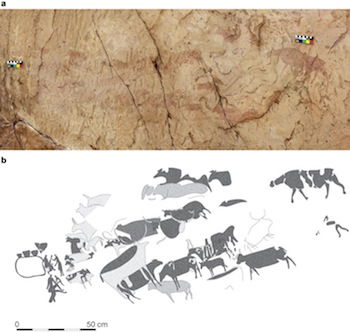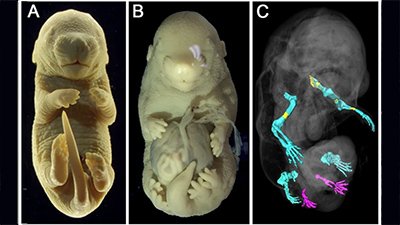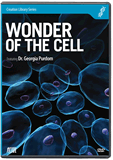
Dairy Products Among Early Saharan Inhabitants
Dairy products prominent among early Saharan inhabitants.
News Source
- The Christian Scientist Monitor: “Got Milk? Research Finds Evidence of Dairy Farming 7,000 Years Ago in Sahara”
Laboratory scrutiny of pottery shards suggests herders in the pre-desert days of the Sahara* consumed dairy products. Food residue from pottery found at the Takarkori rock shelter in the Libyan Sahara contains animal fats, not only fats from meat but also those from milk. Pottery shards and many cattle bones were dug from the same Holocene (post-Ice Age) layers, confirming the cultural importance of cattle suggested by rock art. Some Saharan rock art emphasizes cows with “full udders,” and some drawings even depict milking.
The proteins and fats embedded in the shards reveal the pots once held not just milk but also butter, cheese, and yogurt.
But in addition to providing a peek into pots from the past, evolutionists point out that humans had to evolve lactose tolerance in order to take advantage of the rich nutritional value of dairy products. It is now widely thought that humans were originally lactose intolerant as adults and that “as dairying spread, so did genes that confer lactose tolerance.” The proteins and fats embedded in the shards reveal the pots once held not just milk but also butter, cheese, and yogurt. Lactose-intolerant people are often able to tolerate fermented dairy products like yogurt and cheese. Nevertheless, lead author Julie Dunne says, “You’re really seeing evolution in action over a very short timescale.”
Human babies, like those of mammalian animals, are born with the ability to digest milk. Lactose, the disaccharide sugar in milk, must be broken down into its simpler components in the small intestine to be absorbed. Lactase, the enzyme that breaks down lactose, is produced by cells lining the small intestine. In premature babies, the gene coding for lactase is sometimes not yet active. And in much of the world’s population, the gene is downregulated after weaning, eventually producing some degree of lactose intolerance. Those whose genes are not downregulated are said to have “lactase persistence.” However, even lactose-intolerant people still have genes coding for lactase enzyme; they are just switched off.

This rock art image and tracing from the Teshuinat II rock shelter in South West Libya show people of the Sahara with cattle and pots. On the left is a cow being milked. Image from Nature.com.
In an adult with lactase persistence, one or both alleles of the lactase gene remain switched on. Because several different genetic variants are associated with the ability to digest lactose after infancy—lactase persistence (LP)—evolutionists consider the appearance of lactose tolerance in scattered populations an example of convergent evolution. Dunne and colleagues say their findings “provide a context for understanding the origins and spread of [not only the European genetic variant but also] other, independently arising LP-associated gene variants in sub-Saharan Africa.”1
While not dangerous, lactose intolerance can result in a loss of some of the nutritional value of milk as well as nausea, bloating, and diarrhea. When undigested lactose passes from the small intestine into the colon, the bacteria living in the colon are able to break down the lactose with consequent excessive production of gas. Symptoms can vary greatly, however, as can the amount of tolerable dairy products, and factors other than genetics are likely involved.
Lactase persistence, regardless of its genetic variant, is inherited as an autosomal dominant trait. Much of the population of Europe and northern India has lactase persistence. There is a patchy distribution of lactase persistent people in Africa. And there is some correlation of prevalent lactase persistence in populations where dairying is common.2 Many scientists believe lactase persistence has been naturally selected because it can broaden nutritional options, though it is difficult to see this as a major survival advantage. Also, particularly in some smaller African populations, lactase persistence is thought to result from other factors such as genetic drift.3
Tracing the geographic spread of dairy products does not reveal “evolution in action.” Mutations responsible for lactase persistence actually represent a loss of genetic information, a shut-down of normal regulation. If anything, the prevalence of lactase persistence is a testimony to the fact an all-knowing Creator designed the human genome with the ability to change.
Although the Bible describes Abraham sharing his dairy products in Genesis 18:8, just a few centuries after the global Flood, it does not tell us when people began drinking milk. Adam and Eve’s lactase genes may have been switched off since there is no necessity for adults to drink milk. But they certainly had lactase-coding genes. A gene expressed in infancy and downregulated later when lactase is not needed is a very efficient arrangement. The regulatory aspect of the lactase gene changes with any of several mutations, allowing for variation in human populations. But no new information is generated. Nothing had to evolve. There is nothing about changes in the on/off switching of an existing functional gene that supports the idea of upward evolution.
*For a biblical and scientific explanation of how the Sahara desert came to be and its connection to Noah’s Flood, see the section “Wet deserts during the Ice Age?” in The Mystery of the Ice Age.
Further Reading
For More Information: Get Answers
Remember, if you see a news story that might merit some attention, let us know about it! (Note: if the story originates from the Associated Press, FOX News, MSNBC, the New York Times, or another major national media outlet, we will most likely have already heard about it.) And thanks to all of our readers who have submitted great news tips to us. If you didn’t catch all the latest News to Know, why not take a look to see what you’ve missed?
(Please note that links will take you directly to the source. Answers in Genesis is not responsible for content on the websites to which we refer. For more information, please see our Privacy Policy.)
Footnotes
- J. Dunne et al., “First Dairying in green Saharan Africa in the fifth millennium BC,” Nature 486:390–394. doi:10.1038/nature11186 (21 June 2012).
- This correlation is not complete. As Catherine Ingram and colleagues point out in a 2009 review article (C. J. Ingram, C. A. Mulcare, Y. Itan, M. G. Thomas, D. M. Swallow, “Lactose Digestion and the evolutionary genetics of lactase persistence,” Human Genetics 124:579–591. DOI 10.1007/s00439-008-0593-6 (2009)), “There are some ethnic groups who rely heavily on milk products and for whom cows or camels play a very important role in their lifestyle, but who have a low reported frequency of lactase persistence, for example, the Dinka and Nuer in Sudan and the Somali in Ethiopia.” Though there is a scramble to attribute such findings to undocumented migrations or other possibilities that seemingly support evolutionary contentions, in another paper in the Journal of Molecular Evolution (C. Ingram, T. O. Raga, A. Tarekegn, et al., “Multiple Rare Variants as a Cause of a Common Phenotype: Several Different Lactase Persistence Associated Alleles in a Single Ethnic Group,” J Mol Evol 69:579–588 DOI 10.1007/s00239-009-9301-y (2009)), Ingram and colleagues do point to the possibility of gut flora adaptation being responsible for lack of lactose-intolerance symptoms among non-lactase–persistent populations. However, whether that adaptation involves normal colonic flora aiding in digestion or just less unpleasant colonic gas production remains unknown.
- C. J. Ingram, C. A. Mulcare, Y. Itan, M. G. Thomas, D. M. Swallow, “Lactose digestion and the evolutionary genetics of lactase persistence,” Hum Genet. 124(6):579–91 (2009), and also www.ncbi.nlm.nih.gov/pmc/articles/PMC1234910.
Recommended Resources

Answers in Genesis is an apologetics ministry, dedicated to helping Christians defend their faith and proclaim the good news of Jesus Christ.
- Customer Service 800.778.3390
- © 2024 Answers in Genesis






